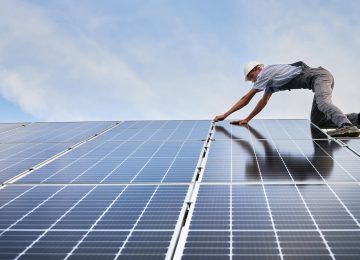Mukesh Ambani—the Chairman and Managing Director, Reliance Industries Limited (RIL) outlined plans to solve the energy trilemma.
The energy trilemma encompasses three elements: affordable energy; energy sustainability and; energy security.
Speaking to investors at the company’s 46th AGM, Mr Ambani reiterated the company’s objective to have an installed renewable energy (RE) capacity of 100 gigawatts (GW) by 2030 and be net carbon zero by 2035.
It must be noted that the company has committed to double its investment for green energy to ₹1.5 trillion to align itself with global sustainable practices and expand its renewable energy portfolio.
“Reliance’s new energy and new materials business squarely addresses this trilemma. Green energy is becoming affordable because its costs are already much less than those of non-renewables, and they will come down further. Green energy is sustainable because the sun and wind are never going to disappear. Green energy is secure because India will no longer be dependent on large-scale imports for its energy needs,” Mr Ambani said at the AGM.
We list below some new announcements and initiatives:
Manufacturing:
RIL simultaneously set up a fully-integrated, automated, giga-scale electrolyser manufacturing facility for batteries at the Dhirubhai Ambani Green Energy Giga Complex in Jamnagar, by 2026.
The facility will produce battery chemicals, cells, packs and containerised energy storage systems, and will also include a battery recycling facility.
Batteries:
RIL will start manufacturing lithium iron phosphate battery or LFP battery which has been proven at scale for its safety, stability, and life. The company targets to produce LFP based solutions at world beating lifecycle costs.
The organization is focused on fast-track commercialisation its sodium ion battery technology. “We will build on our technology leadership position by industrialising sodium ion cell production at megawatt level by 2025, and rapidly scale up to giga scale thereafter,” Mr Ambani said at AGM.
Green Energy and renewables:
With the manufacturing set-up in place, RIL will leverage its EPC capabilities to accelerate and enable installation of at least 100 GW of renewable energy generation by 2030.
Commenting on RIL’s focus on green energy, Mr Ambani said, “Our first priority is to deliver a fully-integrated, end-to-end Solar PV manufacturing ecosystem. This will be one of the largest, most technologically advanced, flexible, and most cost-competitive Solar giga factory globally, and will be converting sand into Solar PV modules.
The solar giga factory will include manufacturing of PV modules, cells, wafers and ingots, polysilicon, and glass at a single location in Jamnagar. Plans are afoot to bring the factory on-stream in a phased manner by the end 2025.
On the wind energy front, the company has mega plans to upscale the infrastructure to generate gigawatt-scale, cost-effective wind power.
“One of the significant cost drivers in the manufacturing of wind blades is carbon fibre. Our foray into manufacturing carbon fibre at large scale provides us with a unique advantage to further integrate and reduce cost of wind turbines. In addition, we will be partnering with the world’s leading technology players in wind equipment manufacturing to deliver most cost-efficient solutions,” Mr Ambani said.
Alternate fuel:
Mr Ambani emphasized the importance of clean and sustainable energy, and highlighted the criticality to transition to clean fuel.
On this he said, “… This year, we commissioned one of the most complex and cost-efficient deep-water projects of this scale – the MJ Field, in KG-D6 Block. This includes a state-of-the-art FPSO which is among the largest and the most complex in the world with a gas production capacity of 14 MMSCMD. We are well on our way to enhance production to 30 MMSCMD, which will be 30% of India’s gas production and 15% of its current gas demand.”








